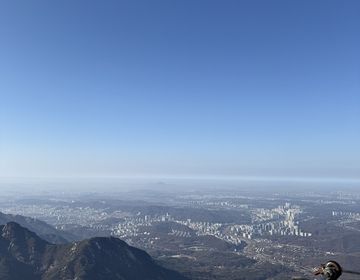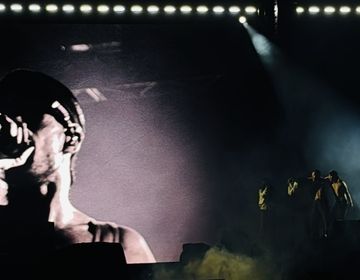Standing Between Two Koreas
On October 15th, I joined one of the most eye-opening excursions I’ve experienced during my time studying abroad in Seoul, a trip to the Korean Demilitarized Zone (DMZ). This day trip offered a mix of history, nature, and perspective that left me thinking long after I returned to the city.
My day began bright and early at 7:00 a.m. when our tour group met at Hongik University Station. Though it was still early and the city was just waking up, everyone was buzzing with excitement. After introductions and a quick overview of our itinerary, we boarded the bus and set off on the hour-long ride toward the northern border.
Our first stop was the Gamaksan Suspension Bridge, a spot I hadn’t heard of before but quickly became one of my favorite parts of the trip. After arriving, we started a short 15-minute hike to reach the bridge. The trail was easy to manage and surrounded by lush greenery that felt worlds away from the fast-paced energy of Seoul. When we finally reached the bridge, which stretches roughly 150 meters across the valley, the view was absolutely stunning. Most paused to take photos, but others just stood there quietly, taking in the peaceful beauty of Korea’s countryside.
After the hike, we made our way back down to the buses and continued toward the DMZ itself. The drive was filled with anticipation, and the atmosphere grew noticeably quieter as we approached a military checkpoint. Once we arrived, South Korean soldiers boarded our bus to verify our passports and confirm our group’s entry. The seriousness of the moment quickly set in this wasn’t just another tourist stop, but a place still marked by tension and history.
After the inspection, we continued deeper into the restricted zone, and visiting a site so charged with historical and political meaning felt surreal. Our guide began by giving us background on the Korean War, how it started, how it ended without a peace treaty, and how the DMZ came to be one of the most heavily guarded borders in the world.
Once we arrived, we stopped at a visitor center where we learned about several fascinating aspects of inter-Korean history. One particularly interesting story was about Chung Ju-yung, the founder of Hyundai. Our guide explained how he took 1,001 cows across the border as a symbolic gesture of reconciliation between North and South Korea. We also got to see displays of North Korean won, and learned about the infiltration tunnels which were secret underground passages that North Korea had built in attempts to dig beneath the border. Hearing about how soldiers discovered and sealed them was both eerie and fascinating.
The highlight of the trip was the visit to the Dora Observatory, located on a hilltop that overlooks the DMZ and into North Korea. From the viewing deck, we could see the outlines of a North Korean village across the border. Ultiizing one of the telescopes, I even spotted a man riding a bicycle along a dirt road. It was surreal to think that just a few kilometers away was a completely different world, shaped by decades of division and political tension.
After our time at the observatory, the bus ride back to Seoul was quiet; I remember staring out the window, reflecting on what we had just seen. For anyone interested in politics, history, or even just understanding Korea on a deeper level, this trip is an absolute must. Standing at the border of two nations still technically at war was humbling, thought provoking, and an experience I’ll truly never forget.
Related Posts
A Seoul Escape to Bukhansan
Get out of the hustle and bustle of Seoul and head to the peak of Bukhansan!


